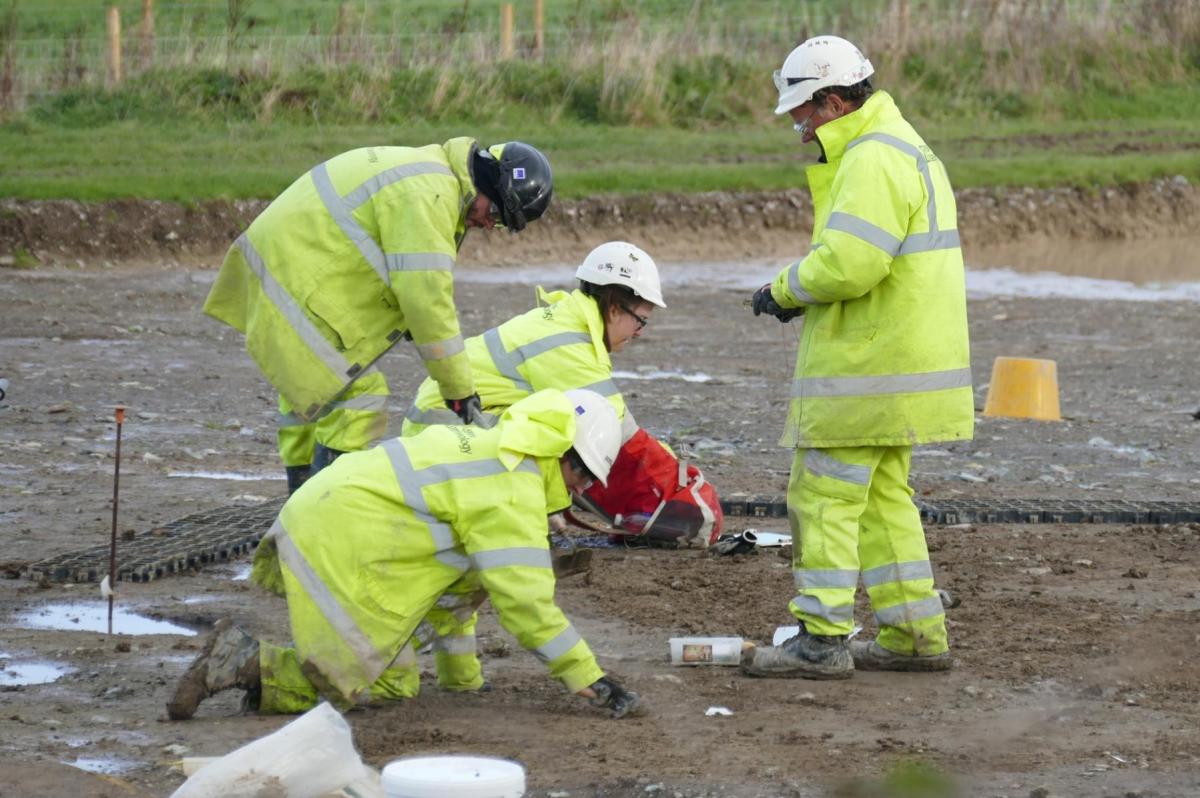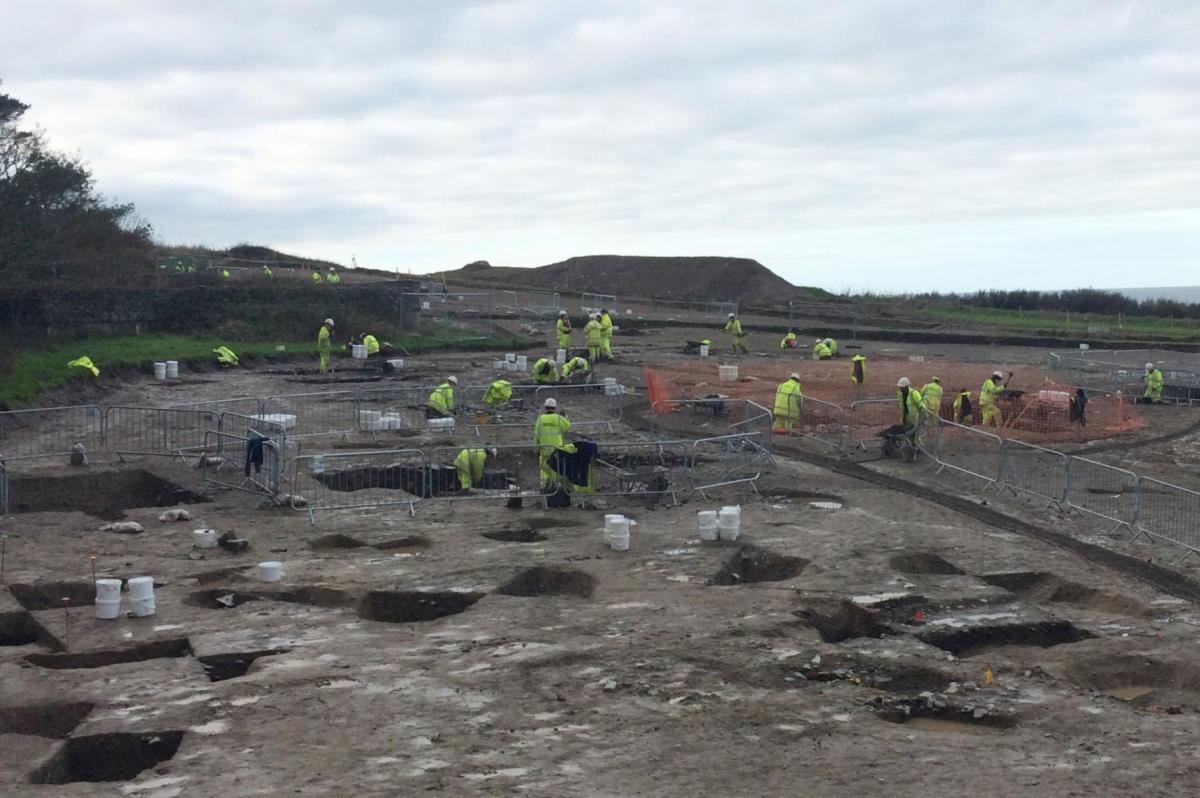53.410714979328, -4.4794204831123
Horizon Nuclear Power (HNP) are constructing a replacement power station at Wylfa, in north-west Anglesey, and Wessex Archaeology has been working with them and their contractors, providing our expertise in Heritage, Archaeology and Geoservices, to identify important archaeological remains and mitigate any impacts prior to the development.
The Challenge
The new power station will be located adjacent to the old decommissioned Magnox nuclear power station, and the development involves altering the existing buildings, constructing new facilities and revitalising the road and energy infrastructure, including works outside the main site such as road widening and power cable replacement. The main site covers 190 hectares.


Our Approach
Wessex Archaeology’s first task in the project was to draw together all the available information about the archaeology, history and heritage of the site – from publications, archives, old maps and historic local government records. Then, geophysical surveys were carried out across the site, which clearly identified a range of potential archaeological features, such as prehistoric enclosure ditches. This was followed by a programme of trial trenching, which has led to a series of open area excavations.
In addition, Wessex Archaeology is running a community dig with HNP and contactors Jones Bros, which is giving local residents the opportunity to excavate and record some of the fascinating archaeology of their island.
Site area 190 hectares
1654 trial trenches
19 archaeological areas identified
Our Results
Research and trail trenching within the site and in the surrounding area have revealed archaeological remains dating from the Neolithic (4000–2200 BC) right up to the 19th century. Because archaeological remains in this part of Anglesey can be very ephemeral and hard to identify, our strategy was to open more evaluation trenches per hectare than is usual for such projects. This approach proved to be very successful and several areas of significant remains were identified as a result, including a Neolithic settlement, Bronze Age burnt mounds and Romano-British industrial activity. We are now involved in excavating these areas, with exciting discoveries being revealed every day.